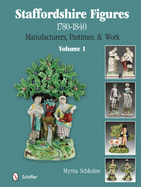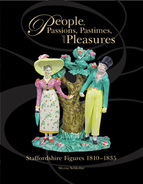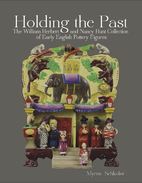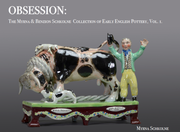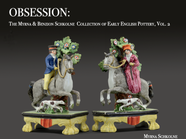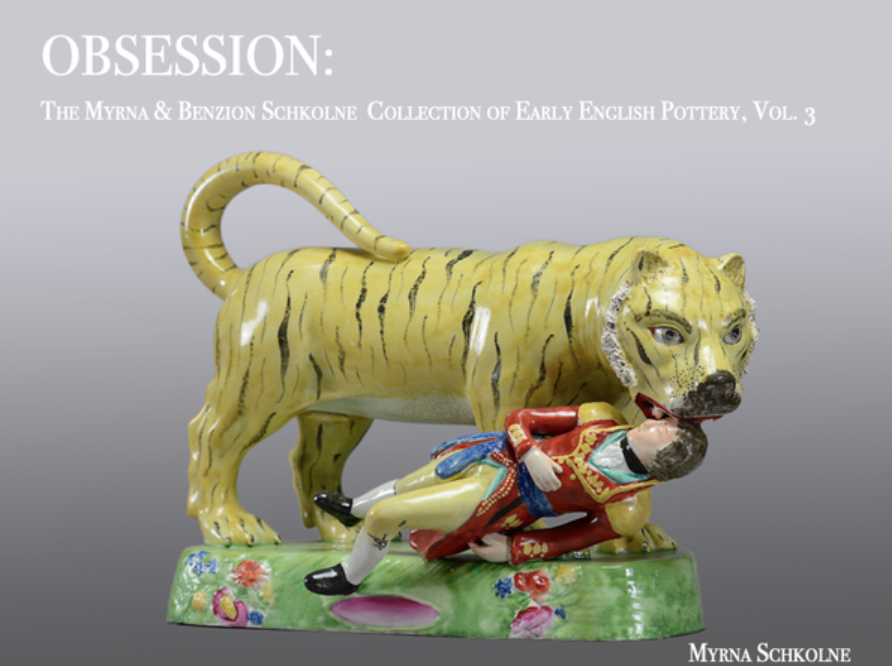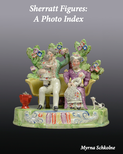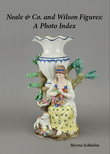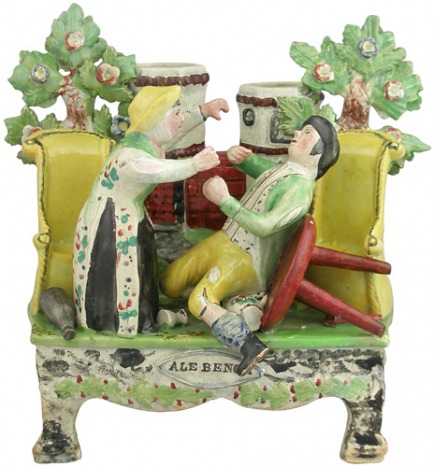
Staffordshire Ale Bench, c1830.
Courtesy of Sampson Horne, London.
Let me preface this by saying I love England, problems and all, so my reference to its 19th century national problem is not intended to cause offense. But in the early 1800s, the country faced a crisis: nationwide, public drunkenness had gotten out of hand.
The English had always had a predilection for booze--or as Shakespeare's Iago had commented, "In England they are most potent in potting." Foreigners had long noted that the English consumed prodigious amounts of booze. An 18th century visitor wrote, "I have seen a Lord whom they call the moving Tun of Claret that hath not been sober six Hours together these twenty Years."
In all fairness to the tipplers of those bygone days, the water supply was generally putrid....so what better to drink than beer? Children drank beer, hospitals gave it to patients and workers received daily quotas. A ruddy complexion equated with good health and beer drinking was not considered problematic--so much so that by 1810, England and Wales had around 45,000 licensed drinking places and the nation was awash in suds.
But a far more lethal problem lurked: gin drinking. By now, England's gin epidemic had raged for decades. Whereas drinking beer was believed to be wholesome, drinking gin was recognized as dangerously addictive. And here we have another instance of government meddling going awry! Parliament noted that, despite France's abundant cheap wine, the French were surprisingly sober. Perhaps abundant cheap gin would do the same for England. So in 1825, parliament slashed the duty on all spirits by a whopping 40%. Instead, people were driven to drinking cheap gin instead of beer and the nation tippled further over the cliff of public drunkenness, violence, illness, and crime.
The Temperance Movement was born in the late 1820s. It's founders were middle class reformers and they didn't want to abolish drinking--but they did want to end intoxication. How? They believed that drinking beer instead of spirits would lead to a merrily sober society, so the Temperance Movement set about promoting beer as a wholesome temperance alternative.
Today, Staffordshire's charming Ale Benches recall that era. These figure groups must have graced the mantles of middle class do-gooders who supported the Temperance Movement. A badge of pride almost.
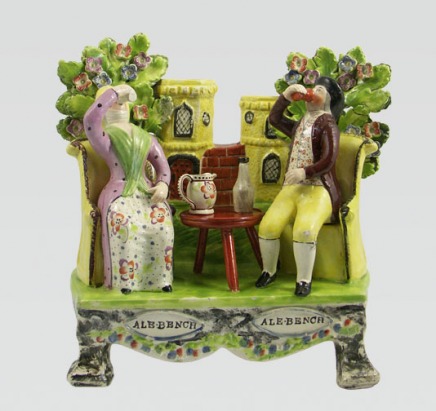
Staffordshire Ale Bench, c1830. Image © myrna schkolne 2006
And here we have beer drinking, Temperance Movement style. Done with great sobriety! BTW, the round table in the center of this group is SO frequently lost. I have seen the figure without the table more often than I have seen it with its table.
Both ale benches illustrated here are in the 'Sherratt' style. In other words, they share attributes common to the large body of figures that originated from a potbank we name 'Sherratt' for convenience. Specifically, the distinctive bases, the turrets that serve as spill holders, the bocages, the titled plaques, and the dress patterns help us attribute these figures to 'Sherratt.'

